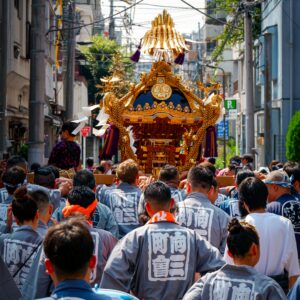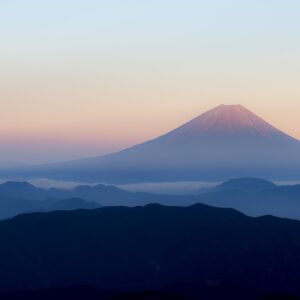25 Best Activities to Do in Japan
- 1. Visit the Fushimi Inari Shrine in Kyoto ($)
- 2. Visit the Hiroshima Peace Memorial Park ($)
- 3. Stroll Through the Arashiyama Bamboo Grove ($)
- 4. Visit Nara Park and Feed the Deer ($)
- 5. Visit the Ghibli Museum in Mitaka ($)
- 6. Tour the Tsukiji Fish Market in Tokyo ($)
- 7. Hike the Nakasendo Trail ($)
- 8. See Cherry Blossoms at Ueno Park ($)
- 9. Take a Calligraphy Class ($)
- 10. Attend a Sumo Wrestling Match in Tokyo ($$)
- 11. Explore the Historic Village of Shirakawa-go ($$)
- 12. Participate in a Tea Ceremony in Kyoto ($$)
- 13. Relax in an Onsen in Hakone ($$)
- 14. Climb Mount Fuji ($$)
- 15. Shop at Tokyo's Akihabara District ($$)
- 16. Take a Food Tour of Osaka ($$)
- 17. Tour the Okinawa Churaumi Aquarium ($$)
- 18. Attend the Sapporo Snow Festival ($$)
- 19. Explore Himeji Castle ($$)
- 20. Experience Tokyo Disneyland ($$$)
- 21. Take a Bullet Train Ride ($$$)
- 22. Explore the Nightlife in Shinjuku, Tokyo ($$$)
- 23. Enjoy a Kabuki Show in Tokyo ($$$)
- 24. Visit the Odaiba District in Tokyo ($$$)
- 25. Participate in a Sushi Making Workshop ($$$)
- Final Word from Firefly Japan
1. Visit the Fushimi Inari Shrine in Kyoto ($)
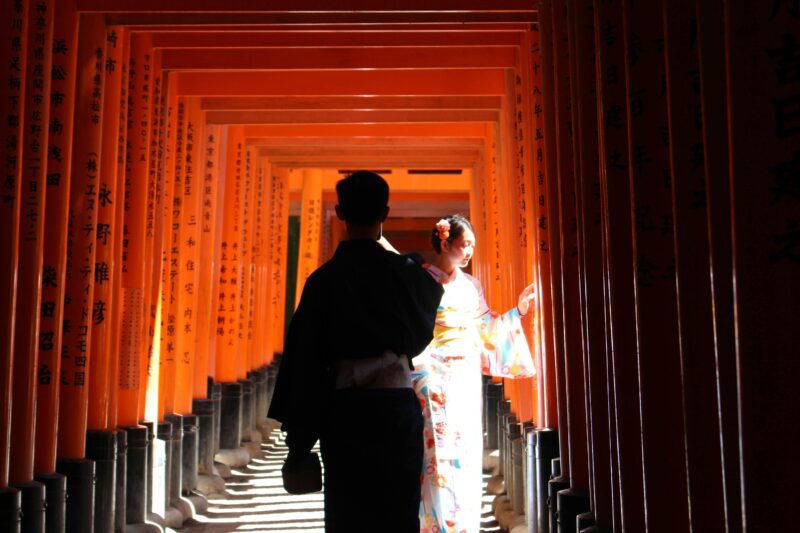
If you’re visiting Kyoto, Japan’s longest capital between the years of 794-1868, Fushimi Inari Shrine is a must-see and on top of the list of Japanese cultural activities. The infamous and renowned torii gates create a pathway up the mountain with its presence of 800 vermilion gates nurturing visitors of an enigmatic feeling.
The earliest structures being built in 711 AD, the site was dedicated to Inari, the Shinto God of all important things of life, and since then it has been used for worship and to bring good fortune.
Other than these shrines, this 870,000 square meter power spot consists of a two to three hour hike up the mountain and souvenir shops, tea stalls, cafes and rent-a-kimonos for the ladies if you’re looking to snap the perfect picture.
Descend the mountain and enjoy the stunning view of the city below, making this spiritual journey as picturesque as it is enlightening.
2. Visit the Hiroshima Peace Memorial Park ($)
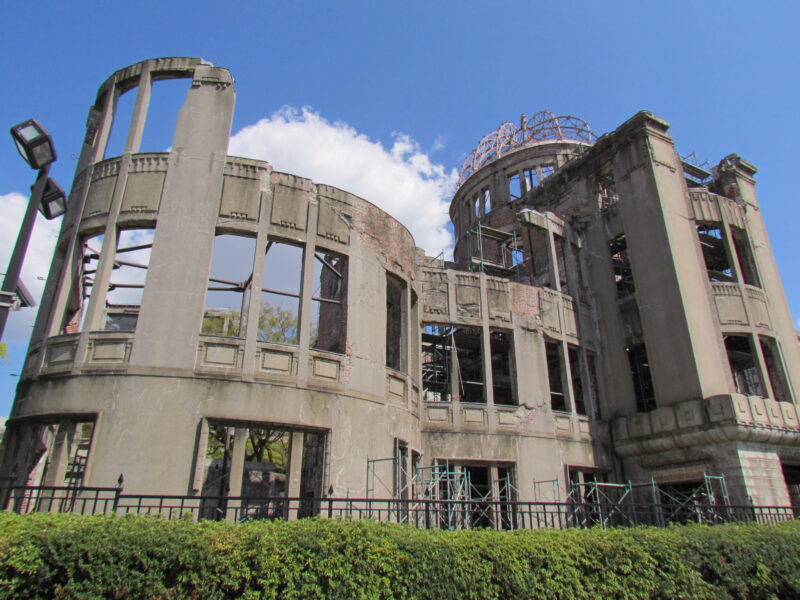
Second on the list of activities to do in Japan is The Hiroshima Peace Memorial Park, a serene space covering over 120,000 square meters located in the center of Hiroshima, is a poignant site drawing more than a million visitors a year.
The site of the 2023 49th G7 Summit, has a number of memorials and monuments, museums, and lecture halls dedicated to the victims of the atomic bomb in 1945.
The park contains a UNESCO World Heritage Site, the Genbaku Dome (A-Bomb Dome), which is one of the few buildings left standing near the bomb’s epicenter as “a symbol of horror and nuclear weapons and humankind’s pledge for peace.”
Head to the Peace Memorial Museum to learn about the history of Hiroshima before and after the bombing took place. This sobering experience reminds visitors of the horror and catastrophe that nuclear bombs can cause and the history of the effects of war is meant to send a strong message throughout the globe.
3. Stroll Through the Arashiyama Bamboo Grove ($)
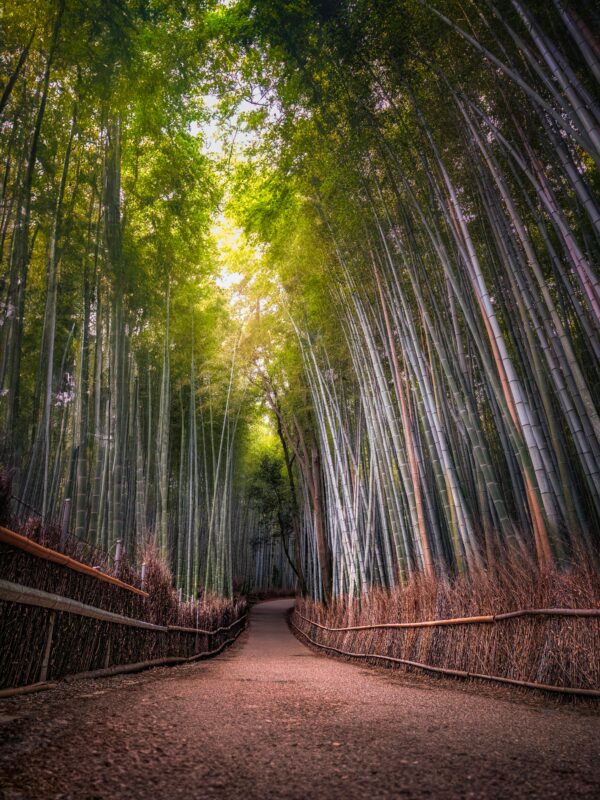
One of Kyoto’s most popular sightseeing spots is the Arashiyama Bamboo Grove in Kyoto. Strolling through the Bamboo Grove provides a moment of zen unlike any other. As you walk through this enchanting forest, you’ll find yourself enveloped by the towering stalks of bamboo that reach skywards, encapsulating the profound natural beauty and tranquility of Kyoto.
The Arashiyama Bamboo Grove, or Chikurin as it’s known in Japanese, is located in the western part of Kyoto, near the base of the Arashiyama Mountains. It’s part of the larger scenic area that has been a celebrated destination since the Heian Period, over a thousand years ago.
This grove is also near Tenryuji Temple, a World Heritage Site and one of Kyoto’s most famous Zen Buddhist Temples. The temple boasts a stunning garden with mountain views, making it a perfect spot for a peaceful morning walk followed by temple visits.
4. Visit Nara Park and Feed the Deer ($)
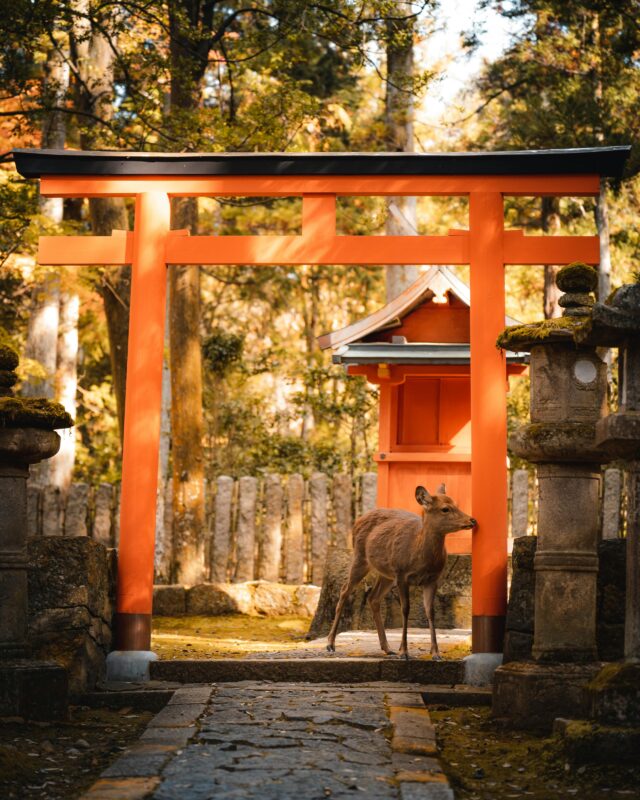
Nara Park in its 1631 acres of land consists of World Heritage sites and is home to hundreds of freely roaming deer and enjoyable all four seasons with events throughout the year. Visitors can purchase deer-friendly crackers to feed these tame creatures, even some learning to bow to ask to be fed, but be careful of their spillings everywhere!
Established in 1880, it is the location of many of Nara’s main attractions including Kasuga Taisha, Todaiji, Kofukuji and the Nara National Museum.
Rich with incredible cultural heritage, the park also houses several significant temples and shrines, Japan’s tallest giant Buddha statue, and important monuments.
5. Visit the Ghibli Museum in Mitaka ($)
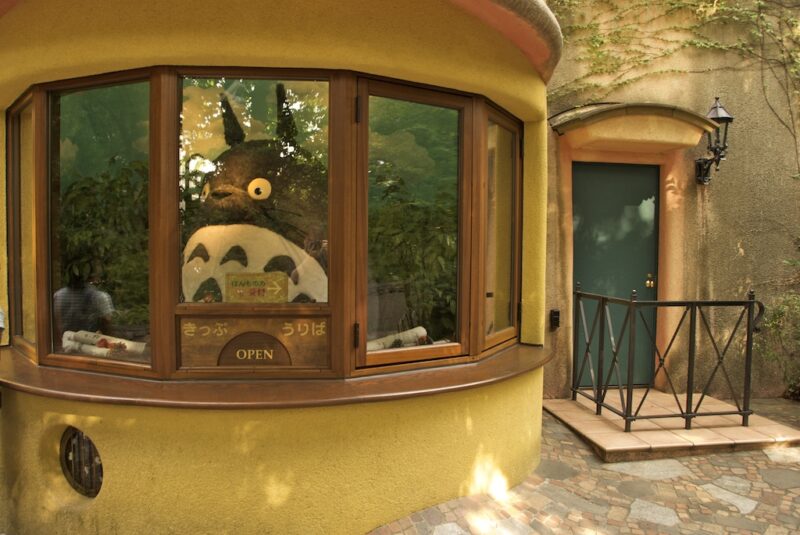
If you’re a fan of Ghibli then you may already know about The Ghibli Museum located on the west side of Tokyo in Mitaka. It is said that the Studio Ghibli director Hayao Miyazaki himself designed the museum, using a lot of European architecture but also using similar storyboards from his film.
The enchanting attraction that celebrates the art of the famed Studio Ghibli attracts millions of visitors around the world seeking to interact with the exhibits and to see a short animated film exclusively at the museum. Its design and exhibits are thoughtfully crafted to spark the imagination of both children and adults alike.
The Winner of five WhatsOnStage Awards and nominated for an incredible nine Olivier Awards, “My Neighbor Totoro” with the collaboration with Nippon TV, is now featured on stage at world famous theaters of London.
6. Tour the Tsukiji Fish Market in Tokyo ($)
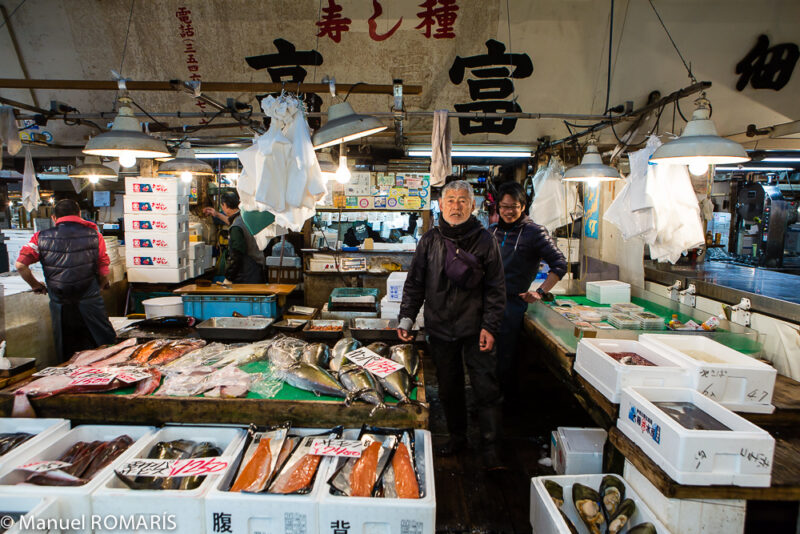
Tsukiji Market, although no longer the site of Tokyo’s wholesale fish auctions, remains a vibrant place to explore Japan’s seafood culture. The outer market is one of the most sought after places in Tokyo drawing tourists from all around the world.
Bustling with vendors selling everything from fresh sushi to handmade kitchen knives, Tsukiji Market gained a reputation for the highest quality seafood, making it a wonderful destination for foodies.
Sampling fresh seafood here is a must, offering flavors that are difficult to find anywhere else in the world, but also for you non seafood eaters Tsukiji street vendors offer Wagyu Beef on sticks and other delicacies than anyone can enjoy.
7. Hike the Nakasendo Trail ($)

The marvelous Nakasendo Trail, also called Kisokaido, was one of five roads for the use to provide the Tokugawa shogunate with the communications network that it needed to stabilize and rule the country.
From Tokyo to Kyoto it stretches 534 km and was used as a highway by the shōgun and the other daimyō and their retinues between the two big cities. There are 69 stations, or post stops, that offer food and drinks along with other services for travelers who are looking to take the load off.
The route once used by samurais leads you through beautifully preserved post towns where traditional inns, shops, and eateries give a sense of Japan’s Edo period.
The most well-known section lies in the Kiso Valley, between Tsumago-juku and Magome-juku, and it is highly recommended to visit early summer in the month of June when all the Hydrangeas are blooming and before the scorching summer settles.
8. See Cherry Blossoms at Ueno Park ($)

Ueno Park is one of Tokyo’s premier destinations for cherry blossom viewing. Known for its enormous trees, its pathways are beautifully lined with blooming Sakura, creating a stunning canopy of pink and white.
Family and friends gather here for hanami, or “flower watch”, which is a tradition where the locals would round up with their tarps, foods, and drink and enjoy each other’s company.
Enhanced by picnickers and special events, food stalls and vendors will make their way out with appetizers and savory nourishment. Making this lively experience even more exquisite, is the illuminating trees at night when they light the cherry blossoms up, giving viewers a cherished and beloved feeling, making it one of the best activities to do in Japan.
9. Take a Calligraphy Class ($)
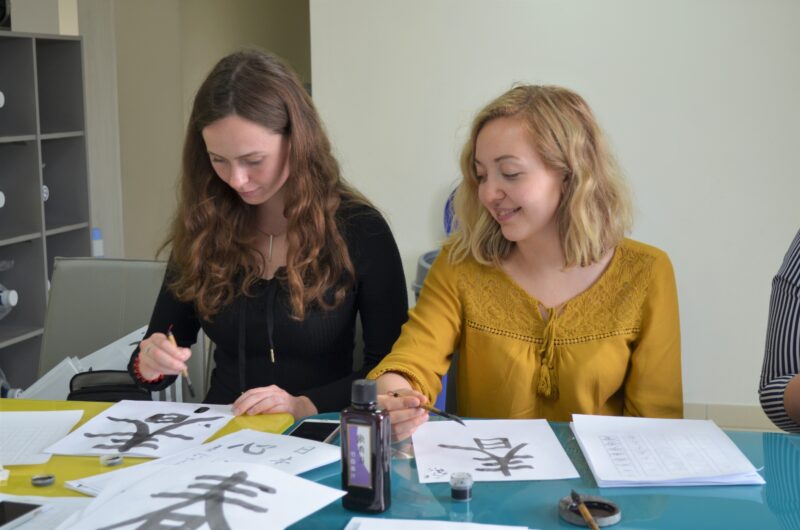
Japanese calligraphy, or Shodo, is an art form that uses an ink-dipped brush used artistically to create expressive characters. A calligraphy class introduces the techniques and aesthetic principles of this art, allowing you to create your own brushstrokes.
Usually incorporated into the schools of Japan, children are often taught at a young age the importance of “Shodo” and its meanings. Recently it has been introduced into “mindfulness” and also practiced in therapy for rehabilitating patients.
If you’re a tourist and looking for activities to do in Japan, taking a calligraphy class can be a memorable experience. After signing up in a “Shodo” class first timers are lectured of its brief history and the materials that are being used in the process. It is often taught that the energy from within is traveled into your hand, then into the brush. Hence, that is why the ancient masters used to say the ink never lies.
These classes often take place in traditional settings, enhancing the cultural immersion and leaving you with a unique souvenir of your time in Japan.
10. Attend a Sumo Wrestling Match in Tokyo ($$)
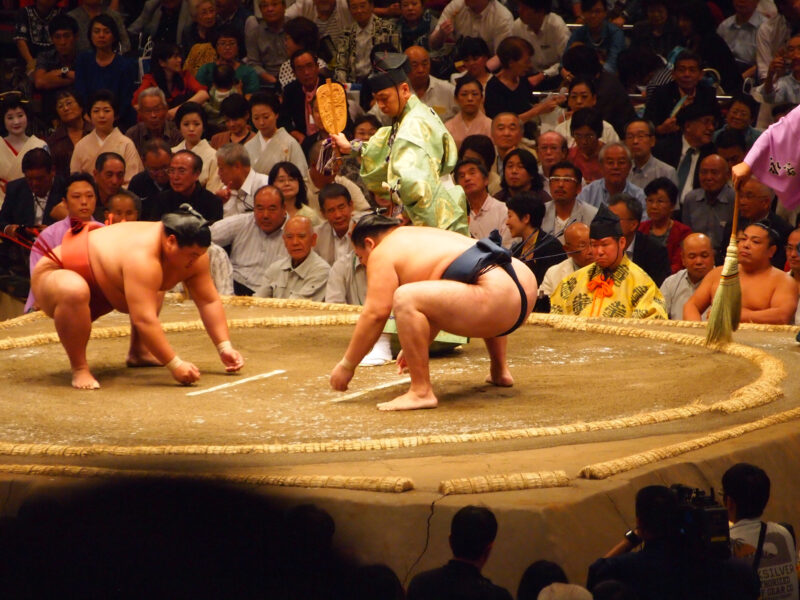
Experience the glory of sumo wrestling, a thousand year ancient Japanese sport that combines strength, technique, and tradition. Two massive colossal type bodies hit head on as the match starts, and the opponent that throws the other guy out of the ring or into the ground first wins.
Originated in Japan, the sport goes as far back as 712, making it the oldest and most unique sport in the world.
Many of the ancient traditions have been preserved, and highly ritual elements are still practiced such as the use of salt purification, stomping onto the ring before a start of a match, or how the wrestlers still wear exquisite colorful shinto guards.
Attending a live match at one of Tokyo’s sumo halls enables you to feel the intense atmosphere as massive titans clash in the ring. Make sure to buy your tickets ahead of time if you’re interested in going.
11. Explore the Historic Village of Shirakawa-go ($$)
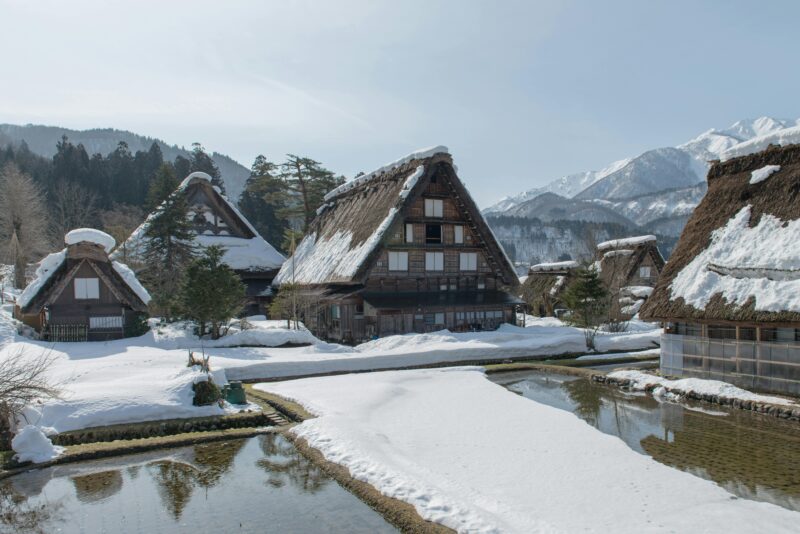
The Gassho-Zukuri Village of Central Japan, welcome to Shirakawa-go. Nestled in a remote mountainous region, it is located in rurals of Gifu prefecture and is recognized for its quaint and traditional buildings.
The UNESCO World Heritage sight consists of houses whose steep thatched roofs resemble hands in prayer. The village is stunning in all seasons, whether it’s blanketed in snow or surrounded by lush greenery.
Your way of getting there can be limited, for there is no train to be taken to preserve its tradition. A quick 50 minute bus ride from Takayama is one of few ways of getting there. If you are looking to spend an evening there, a handful of Gassho style homes offer rooms if booked in advance.
12. Participate in a Tea Ceremony in Kyoto ($$)
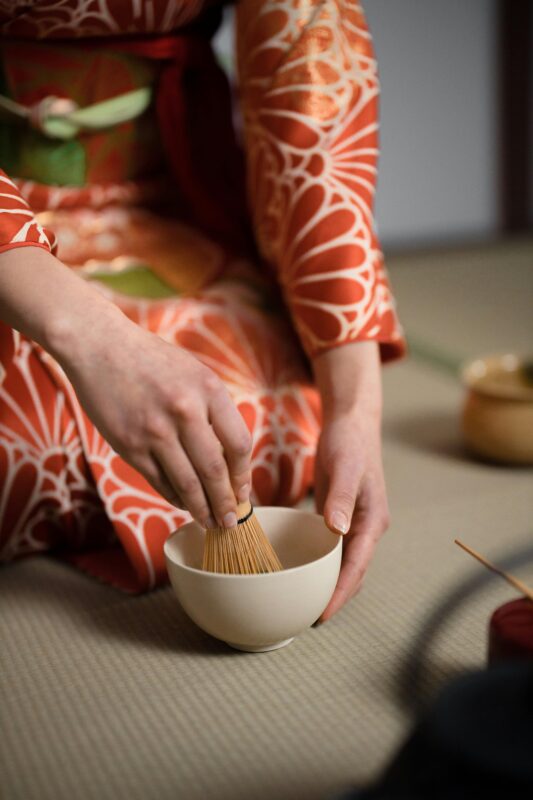
Kyoto, being that it is full of rich heritage and culture, would be the place to participate in a Tea Ceremony. Take a step back from the bustling streets and delve into the serene world of this traditional ritual that emphasizes respect, purity, and tranquility.
The 4 hour careful preparation of matcha, or powdered green tea, is more than just drinking tea. It is an art that educates one of “omotenashi” and allows you to deepen your understanding of the culture in Japan.
13. Relax in an Onsen in Hakone ($$)
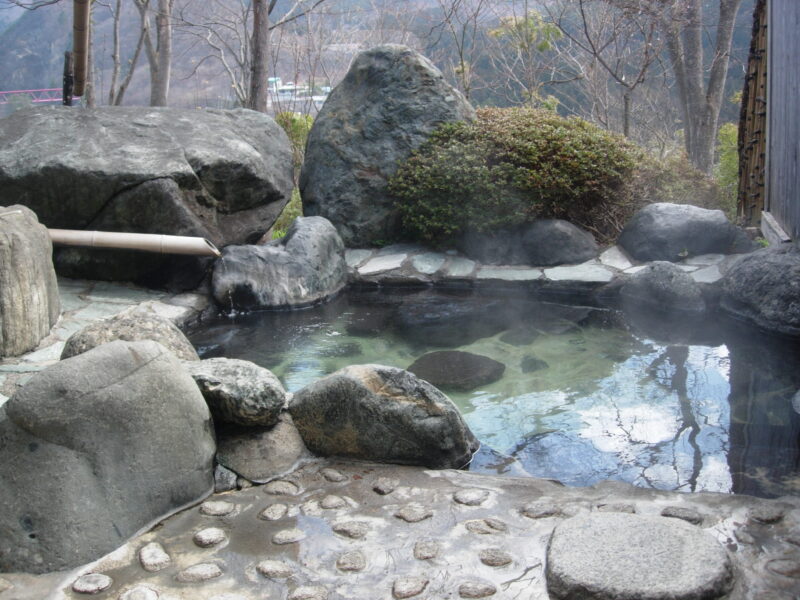
Hakone is famous for its onsen or natural hot springs, providing a perfect retreat from the hustle and bustle of city life. These nature spring baths offer therapeutic relaxation and are often part of ryokans (traditional inns) where you can enjoy a full Japanese hospitality experience.
Although a lot of places offer “Higaeri”, a day’s permit into the Onsen, it is highly recommended to stay at one of many ryokans provided, for the experience is nothing like staying at your typical hotel.
Many onsens also offer views of Mt. Fuji, adding a dramatic backdrop to your soak. If you’re a person with tattoos, a lot of places in Japan still have signs that say “No Tattoo”, so do a little research before going.
One good recommendation is “Tenzan” in Ashigarashimo district or just requesting a private “Kazoku-buro” or family bath when reserving your room.
14. Climb Mount Fuji ($$)
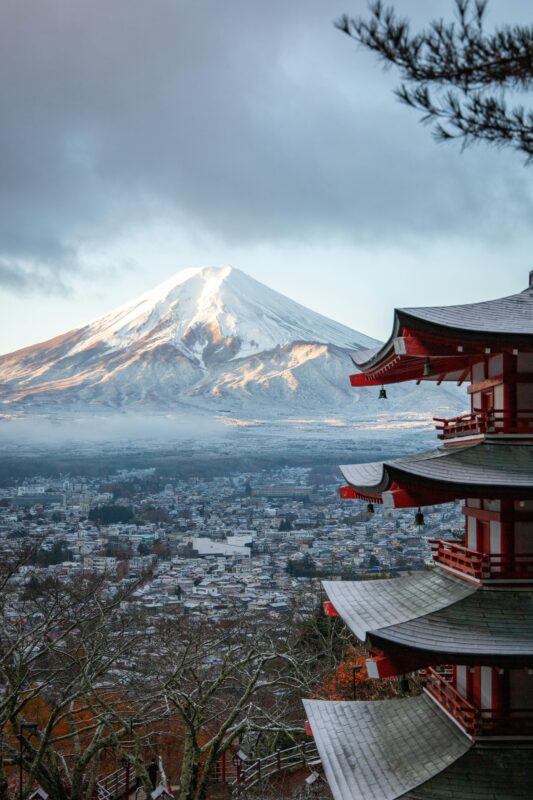
Mount Fuji, or Fujisan, standing at 3,776 meters is Japan’s tallest peak and a cultural UNESCO World Heritage site since 2013 due to its artistic inspiration among many other things.
Located on the east side of Japan in the Kanto district, Fuji is within reach of a spectacular view of the mountain if you’re staying in Tokyo and the surrounding areas.
The iconic symbol of Japan has been used in many arts such as Ukiyo-e paintings and its spiritual values are being preserved.
The majestic form offers a challenging yet rewarding experience for hikers. The official climbing season runs from early July to September when the weather conditions are most favorable. Climbers can ascend during the night to reach the summit in time for a breathtaking sunrise, a truly unforgettable sight. If you’re not up for the climb, the towns and lakes that surround the area is a whole another experience of its own.
15. Shop at Tokyo's Akihabara District ($$)
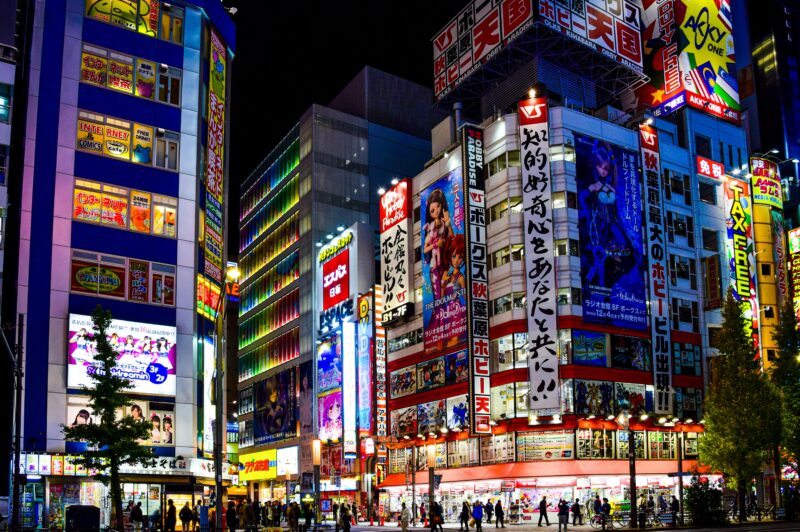
Akihabara located in the Chiyoda Ward of Tokyo only about a ten minute drive from the Imperial Palace, is an epicenter of modern Japanese otaku culture, and is a major shopping hub for electronics, anime, and manga enthusiasts.
Tokyo Anime Center is great for exhibits and souvenirs, and the Radio Kaikan has 10 floors of toys, trading cards, and collectibles.It’s also a great place to experience Japan’s unique otaku culture and visit maid cafes, where waitresses dressed in maid costumes serve food and perform songs.
16. Take a Food Tour of Osaka ($$)
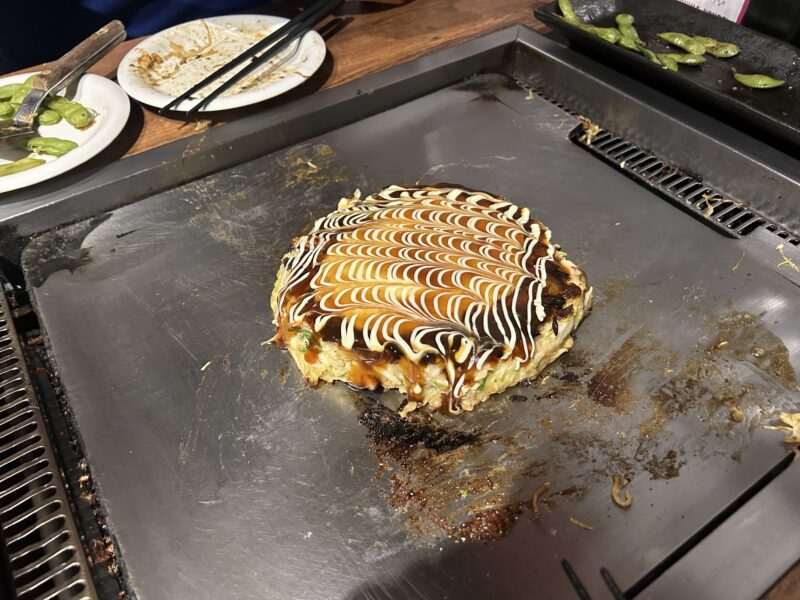
Osaka, the second largest city in Japan, is famed for its vibrant food scene making it an ideal place for a culinary exploration. A guided food tour can take you through local markets and street food stalls where you can try specialties like kushikatsu, which are deep-fried skewered meat and vegetables and “Konamono”, which literally translates as battered foods.
The “Manchester of Japan” is known to have originated Okonomiyaki and Takoyaki which are delicacies in Japan and everybody’s favorite. Visit Dotonbori, a district known for the area’s most prominent features of illuminated billboards and arousing pop-up signs of food stalls and restaurants.
17. Tour the Okinawa Churaumi Aquarium ($$)
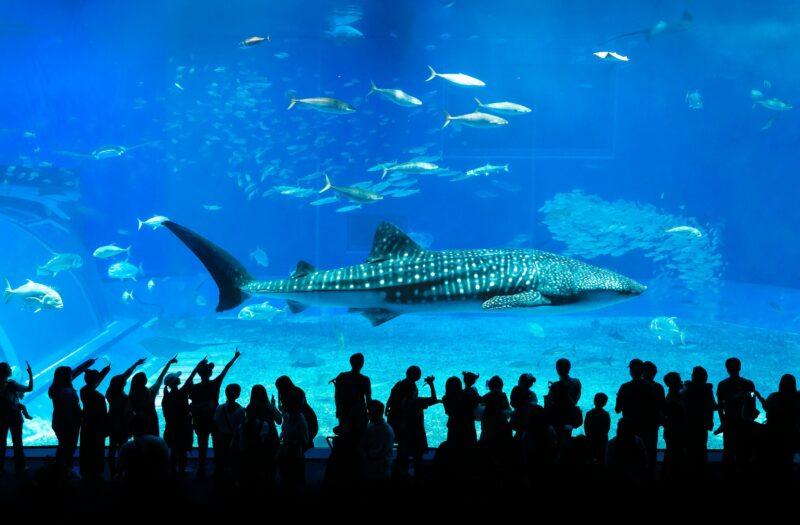
The Okinawa Churaumi Aquarium, situated within the Ocean Expo Park in the northern part of Okinawa Island, is one of the largest aquariums in the world.
Opened in 2002, the aquarium is renowned for its massive Kuroshio Sea tank. This tank holds nearly two million gallons of water and is home to whale sharks and manta rays. Beyond the Kuroshio Sea tank, the aquarium hosts a variety of habitats, from deep sea to tropical coral reefs.
To truly appreciate the beauty and diversity of Okinawa Churaumi Aquarium, try to visit on a weekday or during the off-peak hours in the early morning or later in the afternoon. Also, make sure to check the feeding schedule upon arrival, as watching the whale sharks and mantas feed is a mesmerizing spectacle not to be missed.
18. Attend the Sapporo Snow Festival ($$)
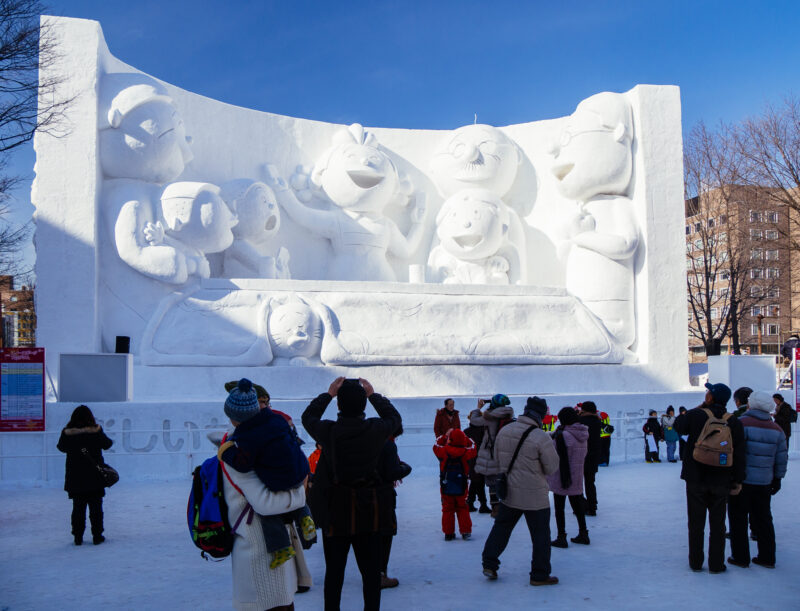
The Sapporo Snow Festival, or Yuki Matsuri, is one of Japan’s most famous and beloved winter events. Held every February in Hokkaido’s capital of Sapporo, the festival originally started in 1950 when local high school students built a few snow statues in Odori Park. It has since evolved into an internationally renowned festival attracting millions of visitors from across Japan and around the world.
The festival spans across three main sites: Odori Park, Susukino, and Tsu Dome. Each location offers a different experience, from the colossal snow sculptures at Odori Park, to the Susukino site which features beautifully illuminated ice sculptures.
Artists and sculptors participate in the festival to compete in sculpture contests held during the festival. The event also features snow slides and snow rafting, making it a fun and festive experience for all ages.
For the best experience at the Sapporo Snow Festival, dress warmly in layers to comfortably enjoy the outdoor activities, as February in Sapporo can be quite cold. Visit Odori Park during the day to see the sculptures in daylight and then again after sunset when they are spectacularly lit up, offering a completely different vibe. Snow boots with good traction are recommended, as the paths can be slippery.
Also, make sure to try the local Hokkaido food available at the festival. Stalls selling hot ramen, fresh seafood, and sweet treats like hot chocolate and warm pastries provide delicious ways to stay warm. If you’re up for more adventure, take a day trip to nearby ski resorts or the famous hot springs for a full winter experience.
19. Explore Himeji Castle ($$)

Japan’s castles, with their towering stone walls and elegant wooden keep, are magnificent reminders of the country’s rich samurai heritage. Touring iconic castles like Himeji Castle, which is known for its brilliant white exterior and intricate defenses, offers insights into feudal Japan’s military and architectural advancements.
Himeji Castle is also known as “White Heron Castle” due to its brilliant white plaster exterior that resembles a heron taking flight. It was constructed in the early 17th century and has withstood many wars, earthquakes, and natural disasters, making it one of the few original castles left in Japan.
When visiting Himeji Castle, it is beneficial to join a guided tour or use an audio guide to fully appreciate their history and architectural details. The castle has steep stairs and low ceilings, typical of defensive structures from the period, so comfortable and appropriate footwear is advised.
Local festivals and events often take place at the castle, including night illuminations, which showcase the castle in a different light – quite literally – and offer a magical experience.
20. Experience Tokyo Disneyland ($$$)
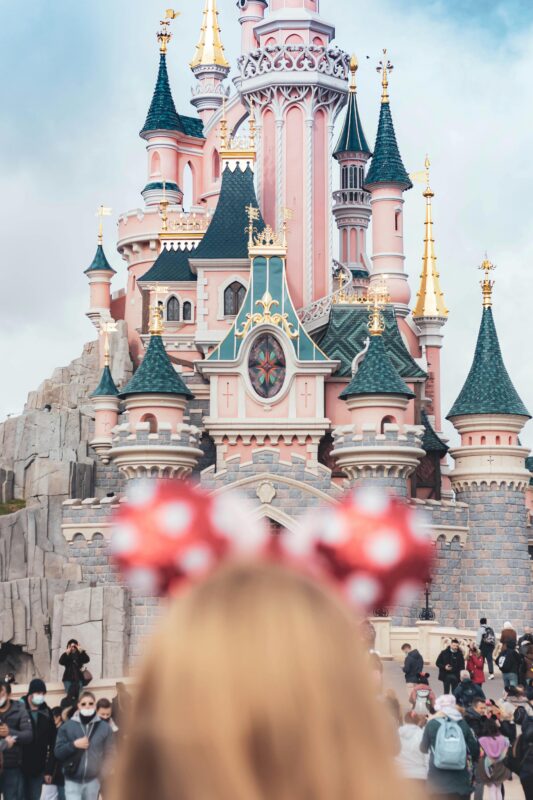
Tokyo Disneyland, the first Disney theme park outside of the United States, opened its gates in 1983 and has since then been a magical destination for visitors from around the world.
Located in the Tokyo Disney Resort in Urayasu, Chiba, just outside of Tokyo, this iconic park combines the wonder of Disney with unique touches that reflect the local culture, making it a unique blend of East and West.
Classic attractions such as “Pirates of the Caribbean,” “It’s a Small World,” and “Space Mountain” sit alongside unique attractions like “Pooh’s Hunny Hunt,” a trackless ride that is highly popular and exclusive to Tokyo Disneyland.
Plan your visit to avoid weekends and Japanese public holidays when the park is most crowded. Visiting on a weekday allows you to enjoy more attractions with shorter wait times. Purchase your tickets in advance online to skip the ticket booth lines at the park entrance.
21. Take a Bullet Train Ride ($$$)
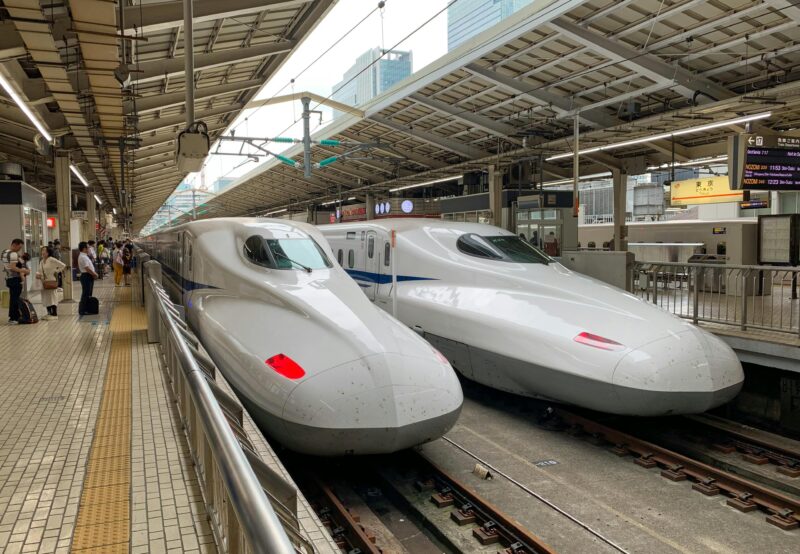
The Shinkansen, often known in English as the bullet train, represents a pinnacle of railway technology and has become an emblem of Japan’s post-war redevelopment and economic resurgence. Introduced in 1964, just in time for the Tokyo Olympics, the Shinkansen revolutionized rail travel by introducing high-speed rail to the world.
For the best value, consider purchasing a Japan Rail (JR) Pass before arriving in Japan. This pass offers unlimited travel on most Shinkansen lines and other JR trains for a set period and can save you a significant amount of money, especially if you plan to travel long distances.
To experience the changing landscapes of Japan in full glory, try to get a window seat on the right side of the train when traveling from Tokyo to Osaka, as this side offers views of Mount Fuji on clear days.
Try the ekiben (station bento boxes) available at the stations or on the train. These bento boxes are a delicious and integral part of the Shinkansen experience, featuring regional specialties from the departure or arrival cities.
22. Explore the Nightlife in Shinjuku, Tokyo ($$$)
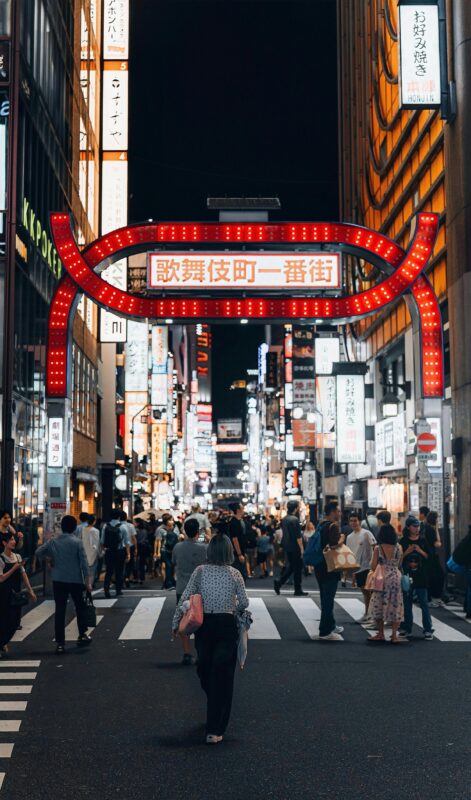
Shinjuku, one of Tokyo’s most vibrant wards, is a microcosm of the city’s vast contrasts and unending energy. Known for its towering skyscrapers, bustling business districts, and neon-drenched entertainment areas, Shinjuku offers an immersive experience into Tokyo’s dynamic urban culture.
The Kabukicho area in Shinjuku, often referred to as Tokyo’s red-light district, offers a myriad of entertainment options, from host and hostess clubs to more mainstream attractions like arcades and cinemas. The Robot Restaurant, located here, is a quintessential Shinjuku experience that combines a cabaret show with robots, dancers, and lasers, offering an unforgettable spectacle.
Shinjuku is also home to Golden Gai, a famous district that consists of narrow alleys and small, cluttered bars with unique themes. Each bar usually seats only a handful of people, providing an intimate and exclusive atmosphere.
For a change of pace, visit Shinjuku Gyoen National Garden, a large park that offers tranquil green spaces, traditional Japanese gardens, and picturesque cherry blossom spots. It provides a stark contrast to the fast-paced streets of Shinjuku and is ideal for a peaceful afternoon.
23. Enjoy a Kabuki Show in Tokyo ($$$)
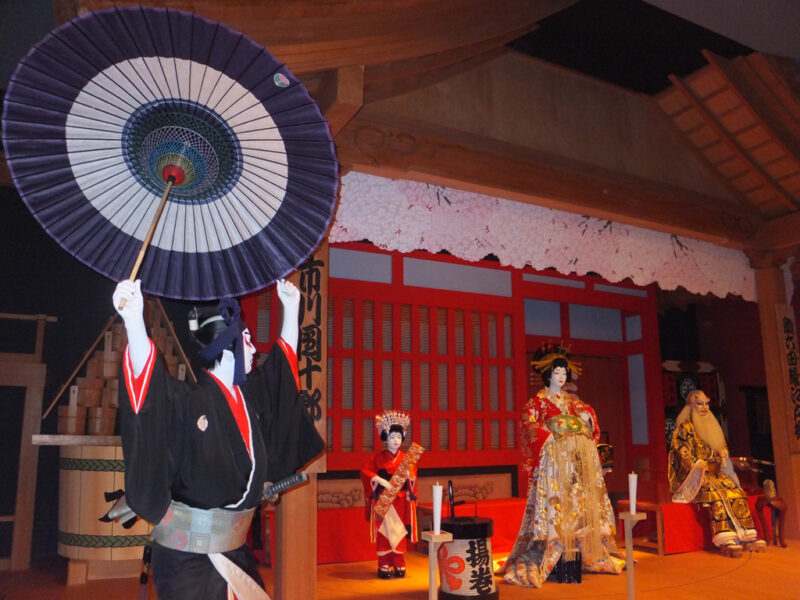
Kabuki is one of Japan’s most iconic performing arts, with its origins dating back to the early 17th century. This classical Japanese dance-drama is renowned for its highly stylized performances, the elaborate make-up worn by its performers, and its ability to blend pre-modern Japanese culture with modern interpretations and presentations.
Kabuki began as an all-female performance art created by Izumo no Okuni, a priestess from Kyoto, who started performing this new style of dance drama in the dry river beds of Kyoto. Due to the social ramifications, women were later banned from the stage, leading to the current tradition of all-male performances, with male actors known as ‘onnagata’ taking on female roles.
Located in Tokyo’s Ginza district, the Kabukiza Theatre is the principal theater in Tokyo for the traditional kabuki drama. The theater itself has been rebuilt several times, most recently in 2013, and combines modern architectural techniques with traditional design.
When attending a kabuki play at the Kabukiza Theatre, it is advisable to buy tickets for just one act if you are unsure about sitting through a full-length play. Single-act tickets can be purchased on the day and allow you to experience kabuki without committing to several hours of theatre.
24. Visit the Odaiba District in Tokyo ($$$)
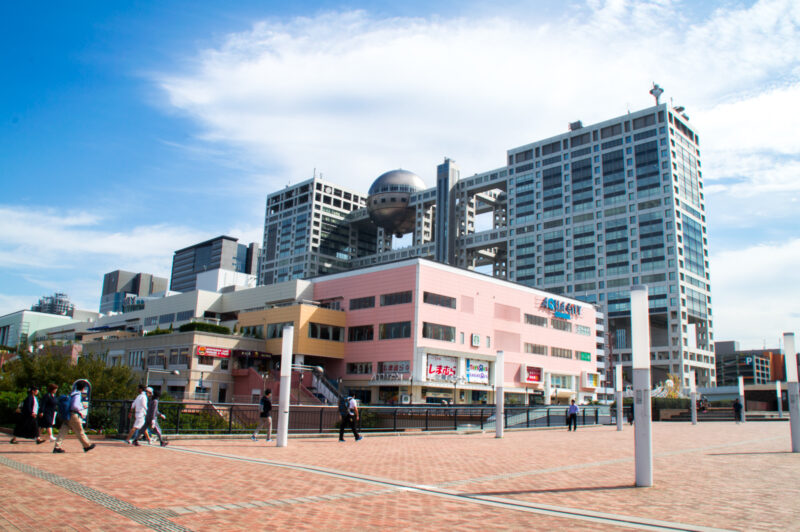
Odaiba is not just a district – it’s a showcase of Tokyo’s rapid modernization and a testament to innovative land development. Originally constructed in the 1850s for defensive purposes, the islands that make up Odaiba were expanded and dramatically transformed in the late 20th century into a major commercial, residential, and leisure area.
The digital art museum “teamLab Borderless” is a key highlight in Odaiba. As the world’s first digital art museum, teamLab Borderless offers an expansive space filled with light installations that blend advanced technology with art to create interactive and immersive high-tech artwork. Make sure to reserve tickets ahead of time.
Other popular attractions in Odaiba is Diver City Plaza, Tokyo Joypolis, Unicorn Gundam Statue, Odaiba Marine Park, Giant Sky Wheel, and Odaiba Kaihinkoen where the replica of the Statue of Liberty resides built with the tribute of the relationship with France which is only about 1/7th the size of the New York original.
Odaiba is well connected by the Yurikamome Line, an automated elevated train with great views of the bay area. Getting a day pass for the train can be cost-effective if you plan to explore various parts of Odaiba.
25. Participate in a Sushi Making Workshop ($$$)
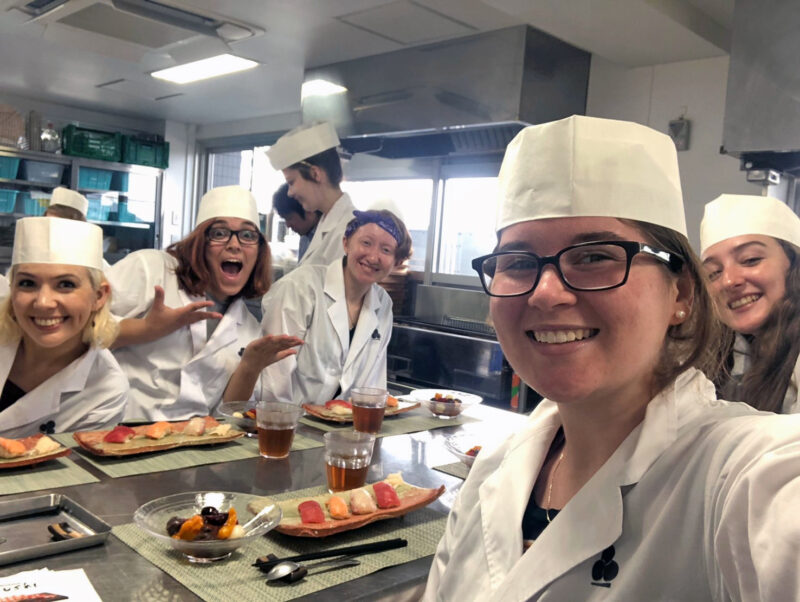
Sushi, one of Japan’s most iconic culinary exports, is much more than just food—it’s an art form that requires skill, precision, and respect for the ingredients. Learning how to make sushi in Tokyo, where some of the world’s best sushi masters reside, is a unique opportunity to dive deep into the heart of Japanese culture and gastronomy.
Seasoned sushi chefs, often with decades of experience, guide you through the intricate process of sushi making. This includes the art of slicing fish, making perfect sushi rice (shari), and presenting dishes aesthetically.
These workshops are popular, so it’s wise to book in advance. Some may also offer additional experiences, like tea pairing or sake tasting, which can enhance your culinary journey.
Engage with the chef and ask questions about the history of sushi and tips for replicating sushi at home. Most chefs are proud to share their knowledge and might even divulge a secret or two about their techniques.
Final Word from Firefly Japan
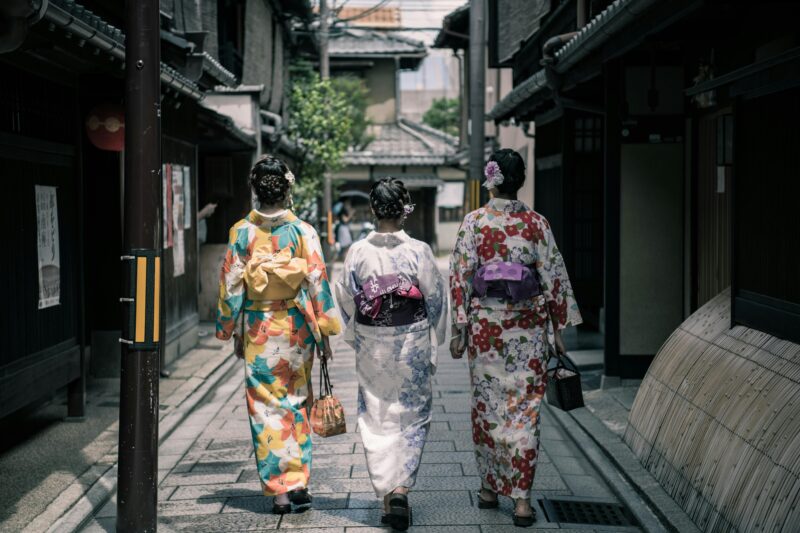
Looking for a travel agency to help with your planning?
Contact Firefly Japan today and let’s start crafting your Japan luxury tour for the trip of a lifetime
